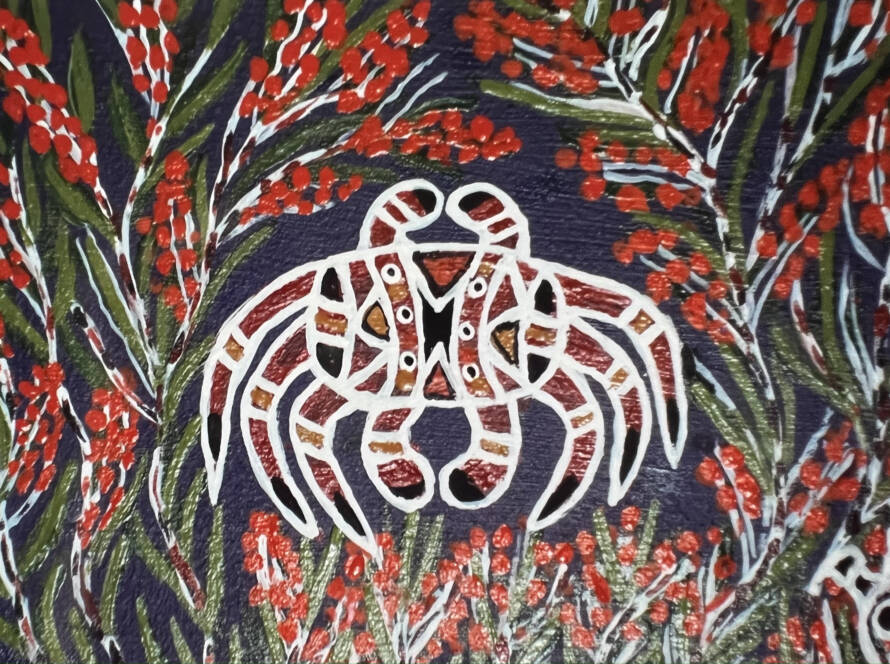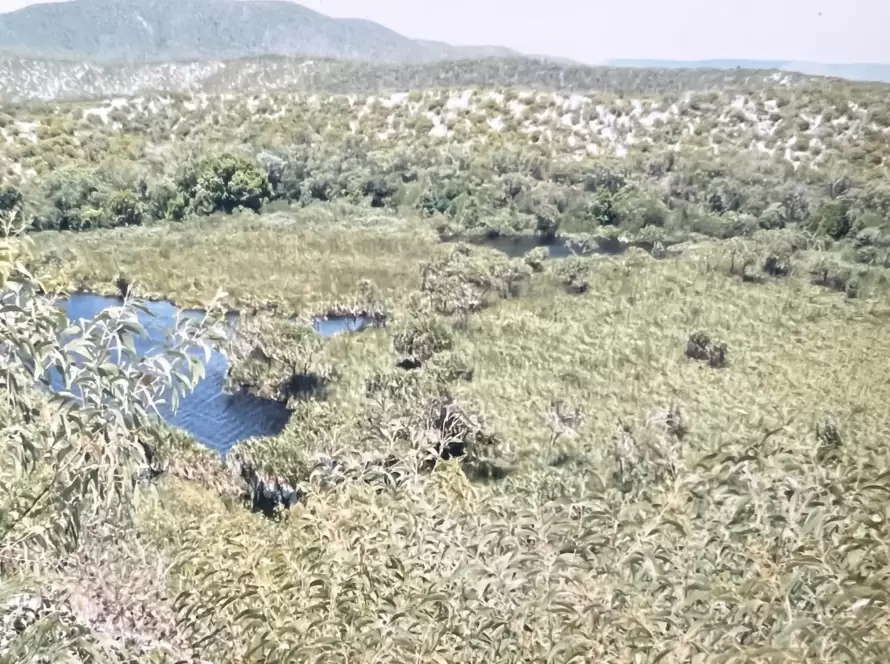![]()
Ngurrgarr (red tailed cockatoo) feather, graphic illustration. © Kristy Day Bowerbird Creative.
Aboriginal fire management practices play a pivotal role in preserving healthy ecosystems and preventing catastrophic bushfires across Australia. Deeply ingrained in Indigenous beliefs, these sustainable techniques have been passed down through generations for thousands of years.
However, with the displacement of Aboriginal people from traditional lands following colonisation, cultural burning practices were nearly extinguished – and with devastating effects. In the 20th and 21st centuries, wildfires rose in frequency and intensity, destroying natural habitats, damaging infrastructure and increasing greenhouse gas emissions.
But we are now on the cusp of change. With the establishment of native title and acknowledgement that Western fire management methods lack efficacy in Australia, there has been a resurgence in traditional practices. Today, Indigenous and non-Indigenous partnerships recognise the importance of incorporating Aboriginal approaches into contemporary fire management models.
Recognised as Indigenous Land Managers (ILMs), Binthi Land Holding Group Corporation (BLHGAC) is the trusted voice for the Binthi Warra clan in Hope Vale on the Cape York Peninsula. Below, we explain the unique ways of aboriginal fire management, their cultural significance and environmental importance.

Ngayu Binaa Ngathu Bubu (I Love My Country). © Roy McIvor.
The Spiritual Significance Of Fire
As well as being an invaluable tool for hunting, cooking and land management, fire has rich cultural significance for Aboriginal people. With stories, memories and dance being shared around the fire for millennia, these flames symbolise our deep connection to the land.

Gambi (flying fox) Wurri Dance. © Roy McIvor.
When wildfires ravage Aboriginal land, they not only scorch the soil but also our shared memories, sacred sites and spiritual bond with the earth.
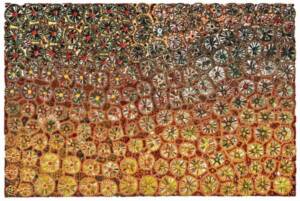
Bubu Gunbi (Dry Earth Blood). © Roy McIvor.
That’s why proper fire management extends beyond knowing where, when and how to burn; the blaze must be ignited by an appropriate authority with Aboriginal kinship to the land.
A Brief History Of Aboriginal Fire Management in Australia
Approximately 70,000 years ago1, Aboriginal Australians began to use controlled burns to clear pathways, maintain habitats for game and regenerate vegetation without damaging fire-sensitive species. These practices lowered the intensity and frequency of wildfires by drawing on a deep understanding of the land.
When European settlers arrived, many Indigenous communities were forced to relocate and therefore could not continue to care for Country2. Additionally, the settlers feared flames and placed restrictions on preventive burning instead of embracing fire as an instrument of land management. They failed to recognise the value of the connection between Indigenous people and fire from a social, legal or economic perspective3.
Coupled with climate change, northern Australia’s grass plains eventually transitioned to thick bushland subject to more severe and frequent wildfires – with a tragic impact on wildlife, biodiversity and greenhouse gas emissions2.
Since Aboriginal people have returned and reinstated their fire management practices, the amount of land being torched by wildfires has halved4. However, the negative effect of the shift in land management over the past few centuries has yet to be reversed. This was highlighted in the 2019-20 wildfires, which engulfed over 24.3 million hectares of land and killed or displaced 3 billion wild animals.
Recent years have seen a resurgence of interest from landowners, farmers and wider communities looking to harness traditional burning practices.
Advanced technology, such as satellite imagery, GPS and meteorology, is being used alongside traditional practices for stronger fire management outcomes. What’s more, some modern fire management practices, like backburning, are grounded in the Indigenous practice of igniting small burns in patches or mosaics.
However, it is crucial to note that Indigenous land management methods cannot simply be tacked on to Western practices. Aboriginal people must be consulted and engaged throughout the entire process, as we understand when, where and how to execute controlled burns5. In regions where this knowledge has been lost, it must be rekindled through research and collaboration with traditional owners.
Understanding Indigenous Fire Management Practices
Without human intervention, dry grasses that grow during cooler months fuel wildfires later in the year. These blazes cover substantially greater regions at higher temperatures, releasing the greenhouse gases stored in vegetation as it burns.
To prevent this, Aboriginal fire management practices, such as controlled burns, are used across Australia – especially in the north, where many of our communities manage highly-flammable native grasses. Drawing on the traditional knowledge and customs of Indigenous people, such methods are founded on a rich understanding of the connections between various flora, fauna, and natural processes.
The aim is to maintain a healthy ecosystem by:
- Reducing the risk of uncontrollable wildfires by decreasing fuel loads;
- Stimulating vegetation regeneration by ridding the land of dead plants;
- Supporting the growth of plant species that have adapted to fire; and
- Promoting biodiversity by nurturing habitats for threatened species.
Importantly, Aboriginal fire management is considered a shared responsibility amongst the entire community. It involves planning and monitoring controlled burns, assessing the health of the ecosystem, and reacting to wildfires. These duties are often performed alongside other land management techniques, such as selective harvesting.
Today, there is a mounting appreciation for the contribution of Aboriginal practices to fire management and conservation initiatives. BLHGAC is one of many Indigenous groups that have partnered with non-Indigenous organisations and policymakers to incorporate traditional knowledge into modern land management strategies for a more sustainable approach. Explore our latest projects today.
What Are Cool Burns?
Cool burning, also known as cultural burning or fire-stick farming6, is a traditional fire management practice that uses slow, low-intensity blazes to clear underbrush before catastrophic wildfires harm the land upon lightning strike.
Usually ignited in the early dry season when the weather is colder, cool burns follow a mosaic pattern and self-extinguish once the grass is scorched. Approximately 50% of land is left untouched, with burnt grass retaining its former shape.
These controlled burns are set with tools such as a kerosene bark torch, drip torch or matches. This usually occurs during nighttime or early morning, when dew helps to calm the flames and gentle winds allow Aboriginal people to guide the burn.
Cool burns reduce the build-up of wildfire fuel, creating fire breaks and sparking the growth of new vegetation. This process produces patchy habitats that support smaller species to thrive and prevent wildfires from damaging the ecosystem7.
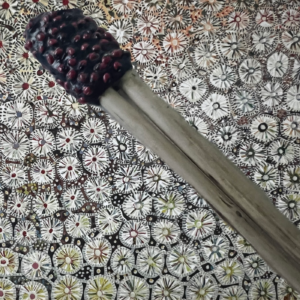
Yuku Ngaala (Fire-Sweat – Burn Off) and firestick. © Roy McIvor.
When to burn
Timing is key when it comes to Aboriginal fire management. If the burning is premature, dense shrubs develop afterwards and become a difficult-to-manage fuel load. If too late, the flames can destroy trees and leave little in their wake.
Cool burns are typically lit between June and July when vegetation that grew in the wet season starts to dry, fuel loads are low, and wind patterns are favourable. This is shown in the Binthi Seasonal Calendar, which maps out the weather and plants to be expected in Hope Vale throughout the year:
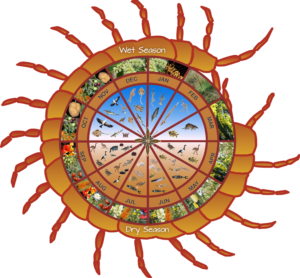
However, the exact right time varies according to the target ecosystem, with each having its own distinct needs. Aboriginal people read the landscape for signs that it is ‘sick’ and ready for fire, looking at indicators like flowering trees and cured native grasses. Only then will we ignite a burn if required.
Where to burn
Burning must be tailored to the ecosystem it is set to safeguard. For instance, whereas certain vegetation in northern Australia (like many of our rainforests) responds poorly to frequent fires, other species need heat and smoke to activate vital processes, such as seed germination and shoot production8.
Therefore, safe and effective Aboriginal fire management demands a deep understanding of the local environment. The climate, plants, animals and community must all be considered before any burning takes place.
For example, the Queensland Parks and Wildlife Service (QPWS) use fire as a land management tool in Cape York Peninsula’s national parks and wildlife reserves with the aim of promoting ecological diversity. Here, controlled burns thwart the advancement of closed rainforest into areas of open sclerophyll woodland, turkey scrub and fire-climax heath10.
However, this region also suffers high rates of deforestation due to government-subsidised fire-assisted pastoralism, with approximately 80% of its land thought to be affected by annual burning9. This is concerning, with research indicating that sustainable forestry may be a more socially optimal land use9.
Sadly, sustainable forestry is unlikely to be adopted without policy intervention because of the missing carbon markets, which position fire-assisted pastoralism as the more economically viable option. Learn more about carbon abatement below.
Carbon Abatement
Aboriginal fire management practices lower greenhouse gas emissions relative to what would have been generated by uncontrolled fires. As well as keeping more carbon within vegetation, cool burns help to reduce the fuel load and fire intensity of subsequent wildfires during the late season.
This creates an opportunity for carbon abatement, a process whereby Indigenous groups can gain ‘carbon credit’ for the estimated reduction in emissions achieved by their controlled burns. This credit can then be sold to finance further land management efforts.
To take advantage of this sustainable source of revenue, some Traditional Owners run carbon abatement businesses. As we do not manage savanna landscapes, BLHGAC is not eligible for carbon abatement. However, Indigenous-owned savanna fire projects in northern Australia abate approximately 1 million tonnes of emissions each year.
Importantly, traditional fire management practices bring many benefits beyond cutting carbon emissions. Read on to learn more about the advantages of this age-old approach.
Why Are Aboriginal Fire Management Methods Important?
Cool burning has many environmental and cultural benefits, including:
Saving wildlife
Sweeping wildfires incinerate large stretches of land, making it challenging for animals to source shelter and sustenance. In contrast, cool burns are slow enough for insects and animals to flee.
Additionally, some Australian fauna has evolved to survive and thrive with fire, with many species dependent on controlled burns to create the optimal blend of habitats. For example, these fires can limit the harmful effects of invasive predators, such as cats and foxes. As a result, smaller Australian species such as the northern quoll, black-flanked rock wallaby and rainbow-coloured Gouldian finch can gain from Aboriginal fire management practices.
Rejuvenating native flora
A “tool for gardening the environment”11, cool burns do not harm root systems, destroy young trees or bake seeds and nutrients within the soil.
Instead, traditional fire practices preserve patches of vegetation in various phases of regrowth to curb competitive exclusion by dominant plant species and maintain a balanced ecosystem.
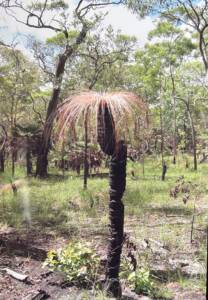
Bung-ga (Xanthorrhoea johnsonii) shoots in November indicate the kangaroos are in season. © BLHGAC.
Leaving the tree canopy untouched
The tree canopy provides invaluable shade in the bush, safeguards prey from predators on the ground and serves as a shelter for animals during wildfires. Therefore, it is important to preserve this element of the landscape.
Cool burn flames remain low to the ground, charring the bark but not the tree canopy. This in turn decreases carbon output, which canopy fires emit large amounts of.
Strengthening Aboriginal ties to the land
Cool burning helps to safeguard historic Aboriginal sites and facilitate access to Country for cultural purposes, such as hunting and ceremonial traditions.
It also encourages the peer-based sharing of Traditional Ecological Knowledge with younger generations. For instance, many Elders pass their wisdom of the land down to Aboriginal men who train with the Royal Fire Service.
As these Indigenous rangers expand their understanding of how to manage fire with traditional methods, their sense of identity and connection to Country intensifies12. Ultimately, they too will be able to show future generations the way forward.
This process helps to preserve cultural ways of land management, in turn helping not just the land, but also the communities who count on it, to endure.
Providing income opportunities in Indigenous Communities
In certain regions, Indigenous communities are well positioned to earn livelihoods and establish enterprises via payment for ecosystem services (PES) and cooperative land agreements that include Aboriginal fire control practices.
These activities offer Indigenous people the chance to gain income, employment and training, as well as develop new knowledge required to burn today’s landscapes.
Learn More About BLHGAC’s Land Management Capabilities
Deeply rooted in thousands of years of Traditional Ecological Knowledge, cool burning can be used to develop a more effective and sustainable approach to wildfire control moving forward.
Aboriginal fire management practices also emphasise the value of community collaboration. Across Australia, Indigenous groups like BLHGAC are applying, evolving and reinstating cool burning methods through a variety of bubu (land) management partnerships.
As experienced Traditional Fire Practitioners, BLHGAC’s Indigenous capabilities preserve our ways of life, while supporting the sustainable management of natural resources. By integrating aboriginal fire management practices into contemporary Western strategies, we can reduce the risk of catastrophic blazes and help our ecosystems to thrive.
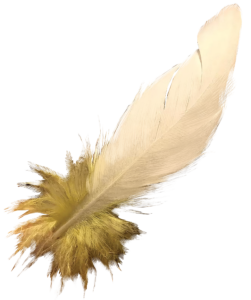 Waandarr (sulphur crested white cockatoo) feather, graphic illustration. © Kristy Day.
Waandarr (sulphur crested white cockatoo) feather, graphic illustration. © Kristy Day.
References
- Stocking, G.C., Mott, J.J., 1981. Fire in the tropical forests and woodlands of northern Australia, in: Gill, A.M., Groves, R.H., Noble, I.R. (Eds.), Fire and the Australian Biota. Australian Academy of Science, Canberra.
- Old ways are new again: reducing greenhouse gas emissions by fire’, ABC Environment 7/11/2014
- Robinson, C.J., Packham, D.R., Powell, J.M. (1995) Cleaning up the Country: Including Indigenous perspectives and involvement in bushfire management, Wildfire, 26-30.
- ‘New generation returns to care for Country’, SMH 28/9/2014
- ‘Fire And The Story of Burning Country’, Cape York Elders & Community Leaders, photographed & recorded by Peter McConchie, Cyclops Press 2013
- Jones, R. (1969) Fire-Stick Farming. Australian Natural History 16, 224-228.
- Yibarbuk, D., Whitehead, P. J., Russell-Smith, J., Jackson, D., Godjuwa, C., Fisher, A., et al. (2001). Fire ecology and Aboriginal land management in Central Arnhem Land, northern Australia: A tradition of ecosystem management. Journal of Biogeography, 28, 325–343.
- Keith, D. A., Williams, J. E., & Woinarski, J. C. Z. (2002). Fire management and biodiversity conservation: Key approaches and principles. In R. A. Bradstock, J. Williams & A. M. Gill (Eds.), Flammable Australia: The fire regimes and biodiversity of a continent (pp. 402–425). Cambridge, UK: Cambridge University Press.
- Ockwell D, Lovett JC. Fire assisted pastoralism vs. sustainable forestry–the implications of missing markets for carbon in determining optimal land use in the wet-dry tropics of Australia. J Environ Manage. 2005 Apr;75(1):1-9.
- QPWS, 2001. Draft Protected Area Policy. Queensland Parks and Wildlife Service, Brisbane.
- Dja Dja Wurrung elder, at a meeting of the Traditional Owner Cultural Fire Knowledge Holder Group, November 2017, Victorian Traditional Owner Cultural Fire Strategy
- Fighting fire with fire: cultural burning at Bundanon brings life back to the land’, SMH 21/4/2018


